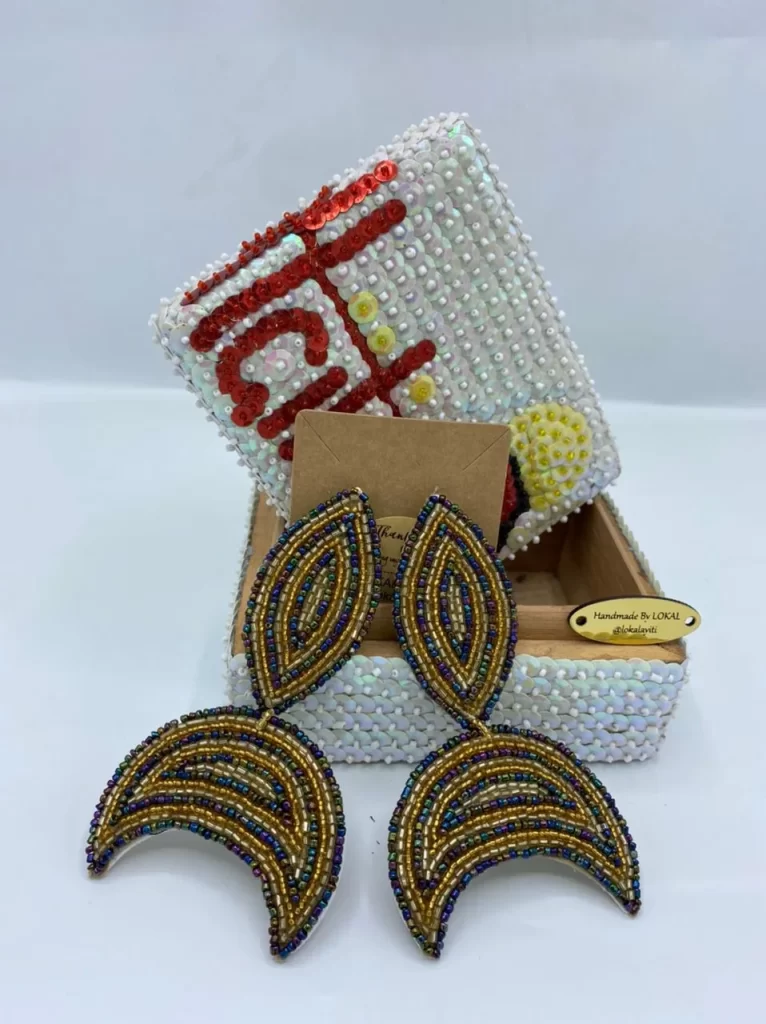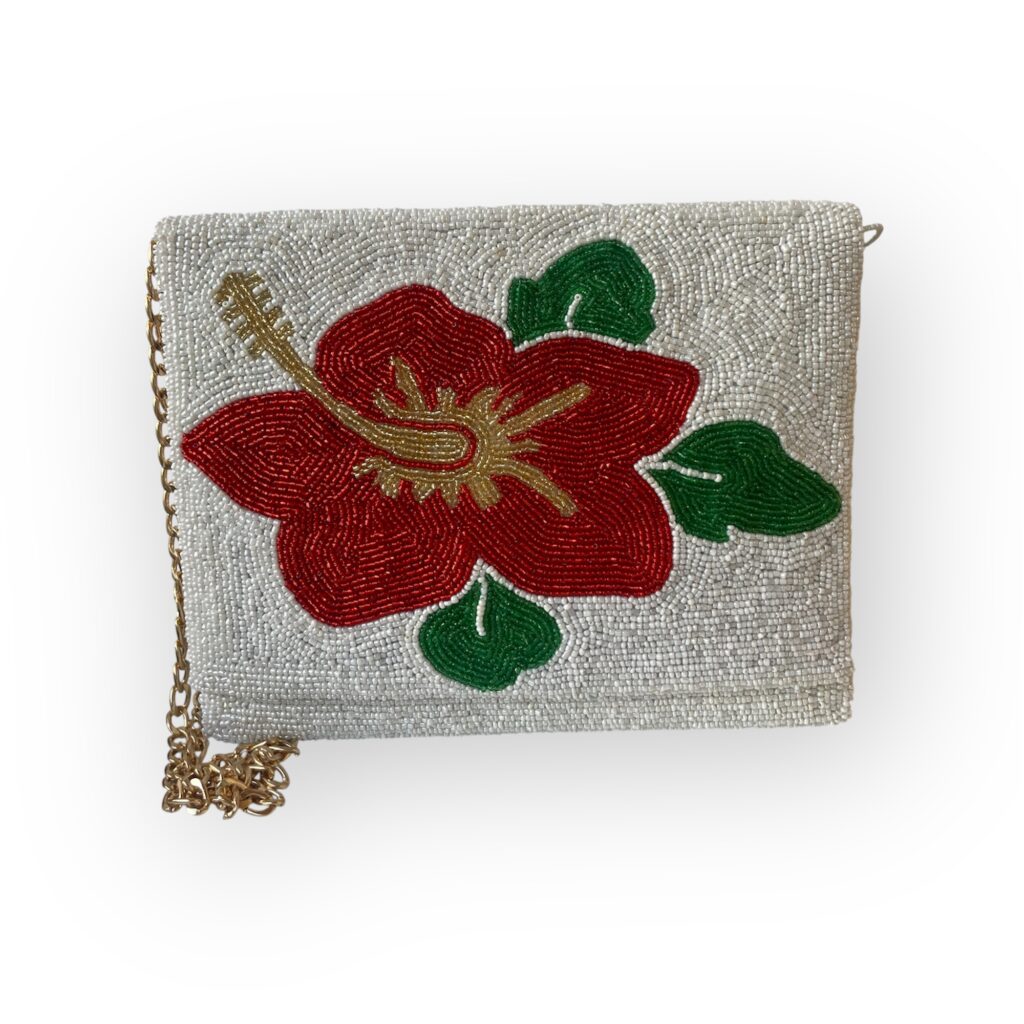Many symbol of LokalAyiti have a name and meaning. LokalAyiti is the place to be for vèvè fabrics and has the biggest variety of voodoo symbol
Haiti is proud of their voodoo culture
What is a Veve?
In Haitian Vodou, vèvè represents the lwa (spirits). Africans invented vèvè. Dahomey, an ancient kingdom in southern Benin, utilized palm oil to draw rectangles and squares on the ground. Drawing ceremonial symbols on the ground is also practiced in Central Africa, and Haiti’s vèvè production may have originated from a western African and Central African cultural confluence. Some researchers say a similar tradition existed among the Taino and Arawak, who Africans met in Haiti. Vèvè is either basic or ornate. Using cornmeal or ashes, an oungan (priest) or manbo (priestess) draws them on the temple’s clay floor. Vèvè is crucial to Vodou ceremonies because it compels a lwa’s spiritual energy to fall or climb.
Some Veve printed on LokalAyiti fabrics
Gran Brijit
GranBrijit is the mother of burials, the loa of money and death, and Baron Samedi’s wife. Her Irish name suggests a connection to Brigid/St. Brigit, the Celtic goddess of poetry, smith craft, and healing. She’s generally white. She’s buried in Haiti’s first woman’s grave. Her colors are black, purple, and white, and she serves on Mondays and Saturdays. Black chickens are her sacrifices. Like her husband and the other Guede Spirits, she has a « potty mouth » and speaks profanity. Gran Brijit will preserve cross-marked gravestones. Those who appear to be faking possession by Maman Brigit at a Vodou ceremony may be submitted to this test, which they would fail if their possession is not real. Her heritage is the banda dance.
Ogun
Ogun (Ogoun) is a traditional warrior like the Greek Ares. Ogun is great, powerful, and triumphant, yet he also displays the fury and destructiveness of a warrior whose strength and brutality may turn against the society he serves. Ogun’s prophesy and magic give him power. Ogun is credited for starting, leading, and empowering the Haitian Revolution of 1804. He must assist people in having a responsive government. Fire, iron, hunting, politics, and war are his domains. He’s the father of modern technology. Ogun supports his family. Hunting feeds his family. He is the patron of smiths and the jobless and is shown holding a machete or sword, rum, and tobacco. He’s one of Erzulie’s husbands, but he’s also in love with Oshun.
Vèvè on dresses
Veve is related to Haiti culture. So many products can be found embroidered with Veve symbols. Past years have witnessed rapid progress in the textile industry craved with Veve. So many textile companies are taking customized orders for dresses with Veve. Haiti’s community loves to wear these dresses to show their attachment to their African ancestry. These dresses are compositions produced to depict the VèVè drawings in Haitian culture.
Lokal Ayiti is a famous brand for Veve clothing. With the passage of time, the Haiti community is finding its worthy Voodoo culture to be expressed through Veve clothing. LokalAyiti has a variety of products drawn Veve on them. The quality of these products is, of course, up to the mark. It includes men’s & women’s clothing, bags, and other accessories.

Ayizan
Ayizan is the French marketplace, trade, and herbal healing loa. She symbolizes love and Vodou’s initiation procedures. Ayizan is the first or archetype mambo (priestess), linked with priestly knowledge and mysteries, especially initiation. She protects rituals. She’s married to Papa Loco and syncretized with Saint Clare. She doesn’t drink, and her sign is a palm frond. On Palm Sunday, people offer her the leaves. She’s gold, yellow, white, and silver. In New Orleans, she is given sugar cane syrup, yams, plantains, and palm fronds as offerings.


Vodou in Haiti
Vodou has its origins in the religious customs of West and Central Africa, where the majority of Haitians’ ancestors were born, as well as in the Roman Catholicism of European invaders in Africa and the French who occupied the western portion of Hispaniola throughout the 17th and 18th centuries.
The religion praises an ultimate maker god who is said to be too far away to be reached directly. Worshippers honor intermediate spirits such as the Yoruba Orisha gods who live in Nigeria, Benin, and Togo, as well as characters from Haitian history. The faith is distributed. It is done artistically rather than prescriptively, which helps to explain the variety of forms practiced elsewhere, such as in New Orleans. Throughout its history, Haitian Vodou, like many great faiths, has brought both consolation and an intimate feeling of solidarity to the oppressed.
It was frequently viewed as a threat by ruling interests. It wasn’t just the French slave masters that sentenced followers to the whip and branding iron, as well as priests to death, in order to quell slave rebellions. The black military commanders and aristocrats who administered Haiti after the French were expelled in late 1803 also attempted to repress the faith, imposing incarceration and fines for participation in Vodou rites and, at times, collaborating with the Catholic Church to remove superstition. These leaders felt compelled to affirm Haiti’s civilization and progress in the face of the republic’s diplomatic exile and exclusion following independence.
This perception of Vodou as a primitive discipline also affected American perceptions of Haiti. The United States military controlled the nation from 1915 to 1934, throughout a pivotal time in the United States expansion into Latin America and Asia. Marines who deployed on the island, as well as journalists who reported them, returned with gruesome accounts of « voodoo » and black magic. Pop culture distortions were not far behind in both novels and cinema. In White Zombie, a year after Bela Lugosi acted in Dracula, he portrayed an evil sorcerer named « Murder » Legendre in Haiti.
The Haitian government officially recognized it as a national religion amongst other faiths in 2003. Precise data are difficult to come by, although it is often assumed that more than half of the Haitian population engages in it. Many Vodouisants call their faith sevis lwa, which translates as « service to the spirits. » Ancestor worship is a fundamental component of the faith. So is hypnotic possession by spirits, which is facilitated by expert drummers’ intricate, holy beats. The sacrifice of chickens, goats, or cows is also common, with the animal supposed to replenish the universe’s life-giving energy. Typically, the meat is shared with family and friends.




























thank you
thank you